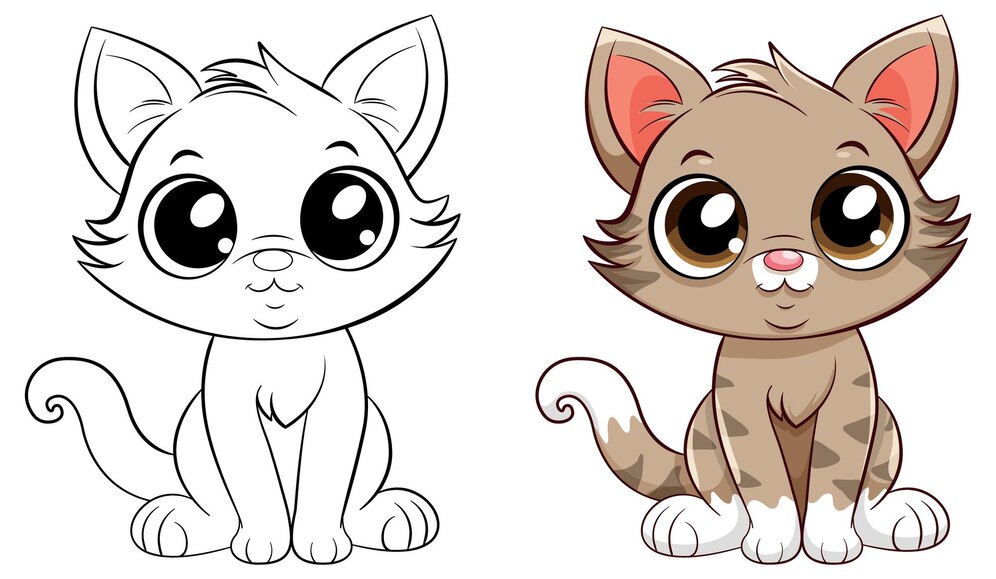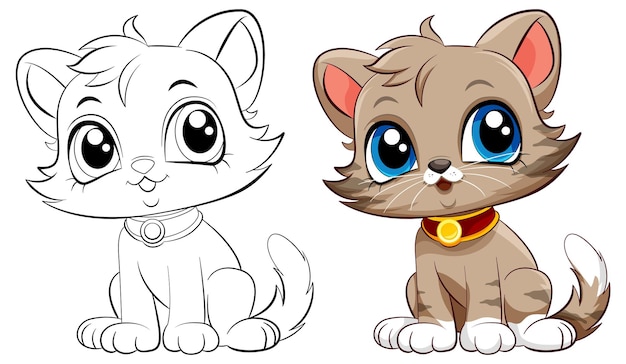
Introduction
drawing:a4z_-ymtkr8= cat can be a rewarding experience for artists of all levels. Whether you’re just starting or looking to refine your skills, capturing the grace and personality of a feline requires attention to detail and a bit of artistic finesse. In this comprehensive guide, we’ll explore everything you need to know about drawing = cats, from understanding their anatomy to mastering shading techniques that bring your sketches to life.
Understanding the Anatomy of drawing:a4z_-ymtkr8= cat
To effectively draw a cat, it’s crucial to grasp its anatomical structure. Begin by visualizing the basic shapes that make up a cat’s body: a circle for the head, and elongated ovals for the torso and limbs. Understanding proportions is key to creating a realistic representation. Break down the body into segments: the head, neck, torso, legs, and tail. Each segment should flow seamlessly into the next, capturing the natural elegance of feline movement.
Essential Tools and Materials for Drawing= Cats
Before embarking on your cat sketch, ensure you have all the required tools and materials. Opt for quality pencils ranging from HB to 6B for varying degrees of shading. A kneaded eraser allows for precise corrections without damaging the paper, while a blending stump or tortillon aids in smoothing out gradients. Choose a textured paper to add depth to your sketches, or opt for a smoother surface for intricate details. Having the right tools ensures your artwork will showcase the intricate details of a cat’s fur and features.
Step-by-Step Guide to Drawing= Cats
Step 1: Sketching the Basic Outline
Start with a light pencil outline to establish the cat’s pose and proportions. Use simple shapes like circles and ovals to map out the head, body, and limbs. Focus on capturing the fluidity of movement and posture that defines a cat’s grace.

Step 2: Adding Facial Features and Details
Once the basic outline is in place, begin adding facial features such as eyes, nose, and ears. Pay attention to the placement of these features as they contribute to the cat’s expression and personality. Add details like whiskers and fur patterns to enhance realism.
Step 3: Shading and Texturing for Realism
Utilize shading techniques to enrich the depth and dimension of your drawing. Observe how light falls on the cat’s fur and replicate it with varying pressures on your pencil. Gradually build up layers of shading to create a three-dimensional effect, emphasizing the contours of the cat’s body and face.
Step 4: Refining the Drawing
Refine your sketch by cleaning up any unnecessary lines and enhancing details. Focus on refining the textures of fur, using short, controlled strokes to mimic its softness and directionality. Pay attention to contrasts between light and shadow to make your drawing = pop.
Step 5: Final Touches and Detailing
Add final touches to your drawing =, such as subtle highlights on the fur to indicate shine or texture. Ensure all features are well-defined and proportionate, adjusting as needed to achieve a balanced composition. Take time to review your artwork from different angles to ensure consistency and accuracy in your portrayal of a cat’s anatomy.

Tips and Techniques for Drawing:a4z_-ymtkr8= Cat
Tip 1: Practice Basic Shapes and Proportions
Mastering the art of drawing = cats begins with practicing basic shapes and proportions. Experiment with different poses and angles to develop a keen eye for capturing a cat’s unique physique and movements.
Tip 2: Study Cat Anatomy Guides
Refer to anatomy guides or observe real cats to deepen your understanding of their skeletal structure and muscle formation. Understanding how bones and muscles interact beneath the fur will enhance your ability to create dynamic and lifelike cat drawings.
Tip 3: Experiment with Different Styles and Mediums
Explore various artistic styles, from realism to abstract interpretations of cats. Experiment with different mediums such as charcoal, ink, or digital tools to discover which best suits your artistic vision and preferences.
Tip 4: Use Reference Photos and Live Sketching
Utilize reference photos of cats in different poses and environments to inspire your artwork. Alternatively, sketch cats from life to capture their spontaneous movements and expressions. These exercises will sharpen your observational skills and add authenticity to your drawings.

Capturing Personality and Expression in Drawing= Cats
Cats are renowned for their diverse personalities and expressive behaviors. Capture the essence of a cat’s personality through subtle details such as the tilt of its head, the curve of its tail, or the intensity of its gaze. Focus on conveying emotions like curiosity, playfulness, or contentment through your sketches, creating a connection between the viewer and your artwork.
Cultural Influence and Symbolism of Drawing:a4z_-ymtkr8= Cat
Throughout history, cats have held symbolic significance in various cultures worldwide. Explore how cats have been portrayed in art, mythology, and literature, reflecting their roles as guardians, companions, or mystical creatures. From ancient Egyptian depictions of Bastet to modern interpretations in pop culture, cats continue to inspire and fascinate artists and audiences alike.
Conclusion
drawing:a4z_-ymtkr8= cat is a journey of exploration and creativity, where each sketch captures the unique beauty and personality of these beloved creatures. By understanding their anatomy, practicing essential techniques, and embracing artistic expression, you can create captivating cat drawings that resonate with viewers. Remember, the key to improvement lies in practice, observation, and a passion for portraying cats with authenticity and artistry.
Read Also: Sara Haines Twin Sister
